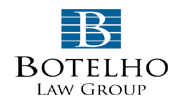Chapter 13
Learn More About Bankruptcy LawIn chapter 13 bankruptcy, you do not have to deal with the liquidation of your property to pay back debts to creditors, and it also allows you to retain a car which is about to be repossessed or retain a home which is about to be foreclosed upon. Unlike chapter 7 bankruptcy where most debts are canceled, the debtor will have a 3 to 5 year period in which they must repay a portion or all of their debts. In order to retain property that is the security for a loan or mortgage, you must use chapter 13 bankruptcy if you’re behind on payments, as Chapter 7 bankruptcy will not help you in the situation.
Chapter 13 bankruptcy is not for everyone, as you must be eligible to apply for this form of bankruptcy relief. In order to be eligible you must have a certain level of income which you receive on a regular basis and is enough for you to afford payments on your secured loans and mortgages and enough money to meet the payment obligations of a chapter 13 repayment plan.
The most important part of a chapter 13 bankruptcy is the repayment plan, which is the main difference between a chapter 7 and chapter 13 bankruptcies. In a chapter 13 repayment plan your bankruptcy attorney will develop a 3 to 5 year repayment plan, to repay a portion or all of your debts. In chapter 13 bankruptcies the repayment of all secured debts is needed to retain the property, although only a portion or possibly all of your unsecured debts will need to be repaid, depending on your particular financial situation.
